#grow from seed
Text
My baby!! I've grown this one from seed, a 3.5 year journey so far. Can't wait for her to keep growing!
Questions? Ask them away!!!

#avocado from seed#avocado plant#avocado tree#avocado#fruit trees#trees#tree#grow from seed#plant growth#new growth#indoor growing#growth#potted plants#potted garden#indoor plants#cute plants#indoor jungle#talking to my plants#amo las plantas#house plants#houseplants#house jungle#houseplants club#outdoor gardening#container gardening#gardening101#gardeners on tumblr#gardeners world#gardener#gardener life
27 notes
·
View notes
Text
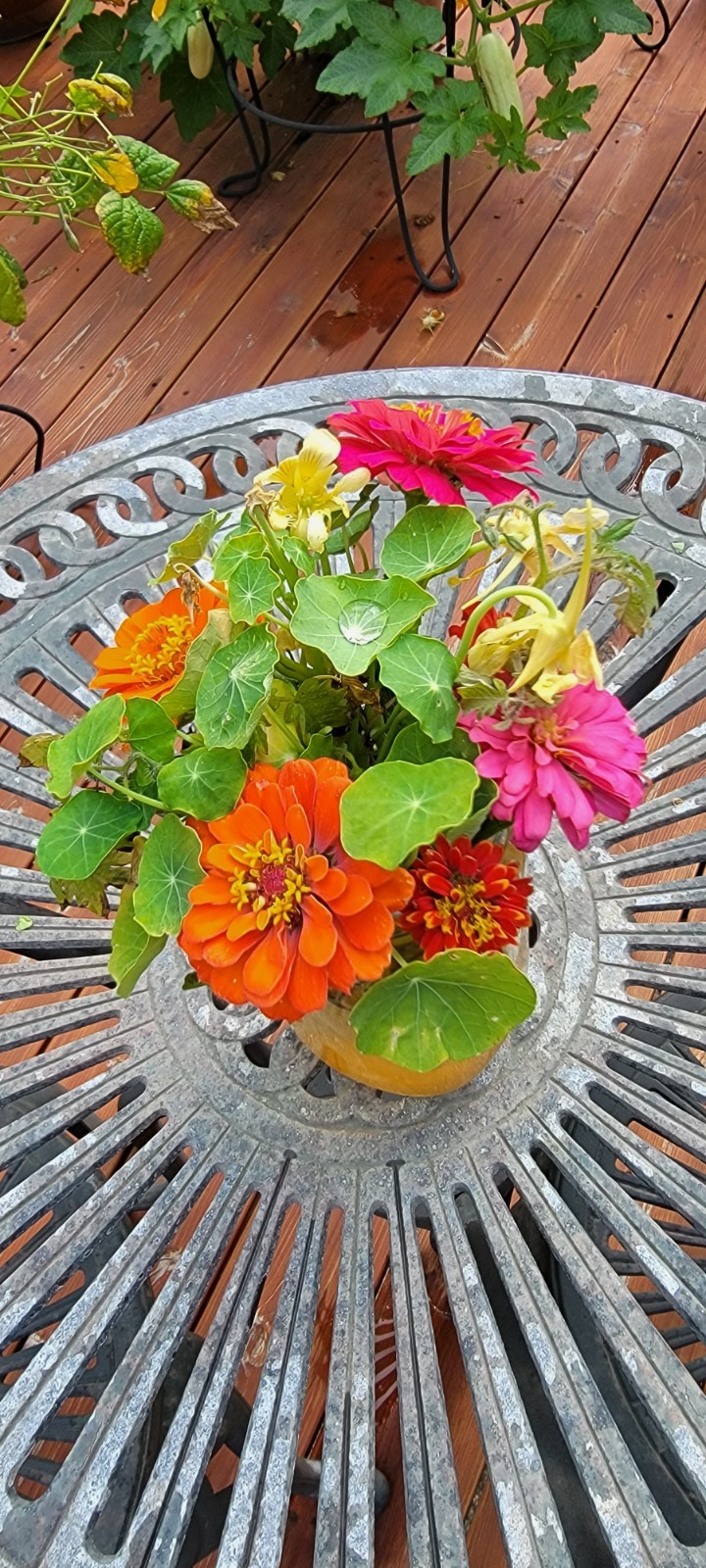

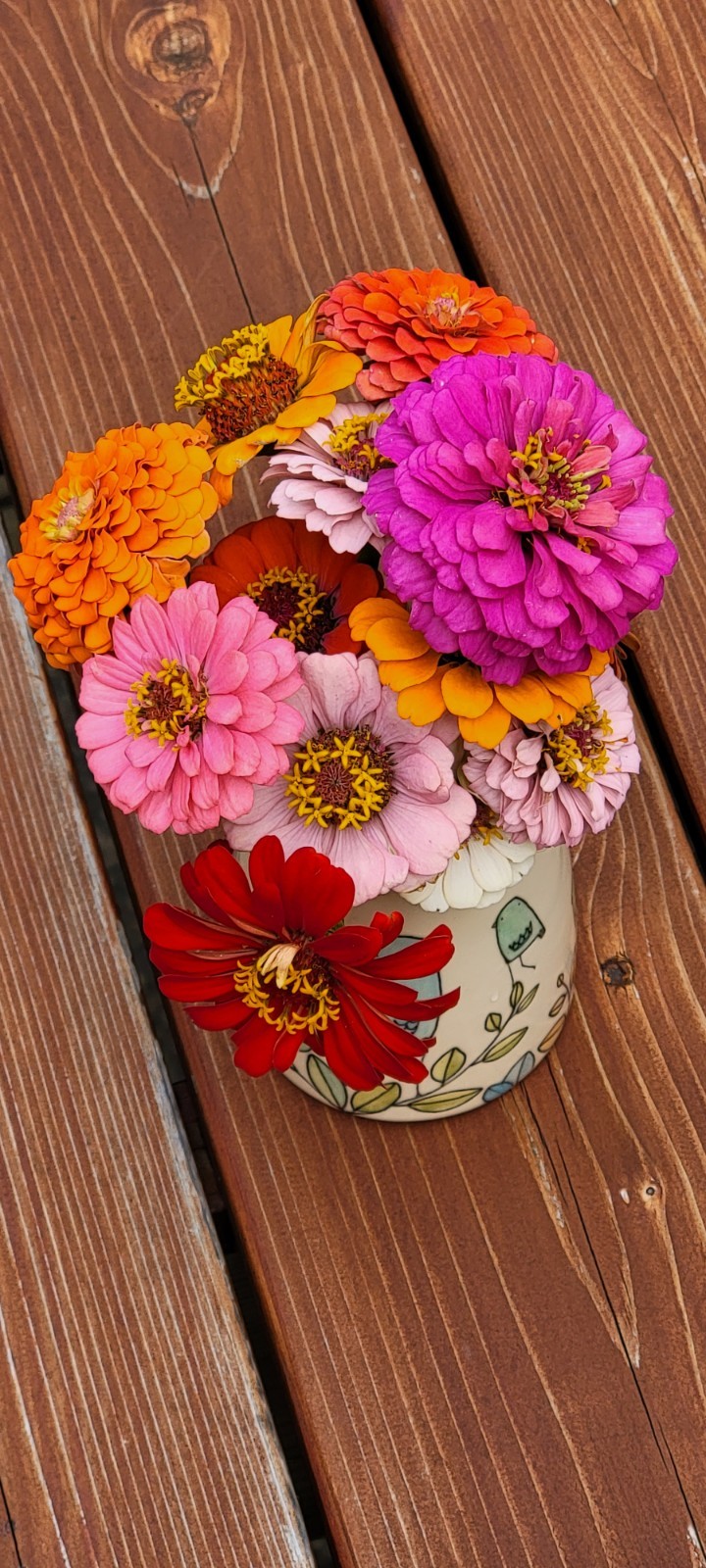



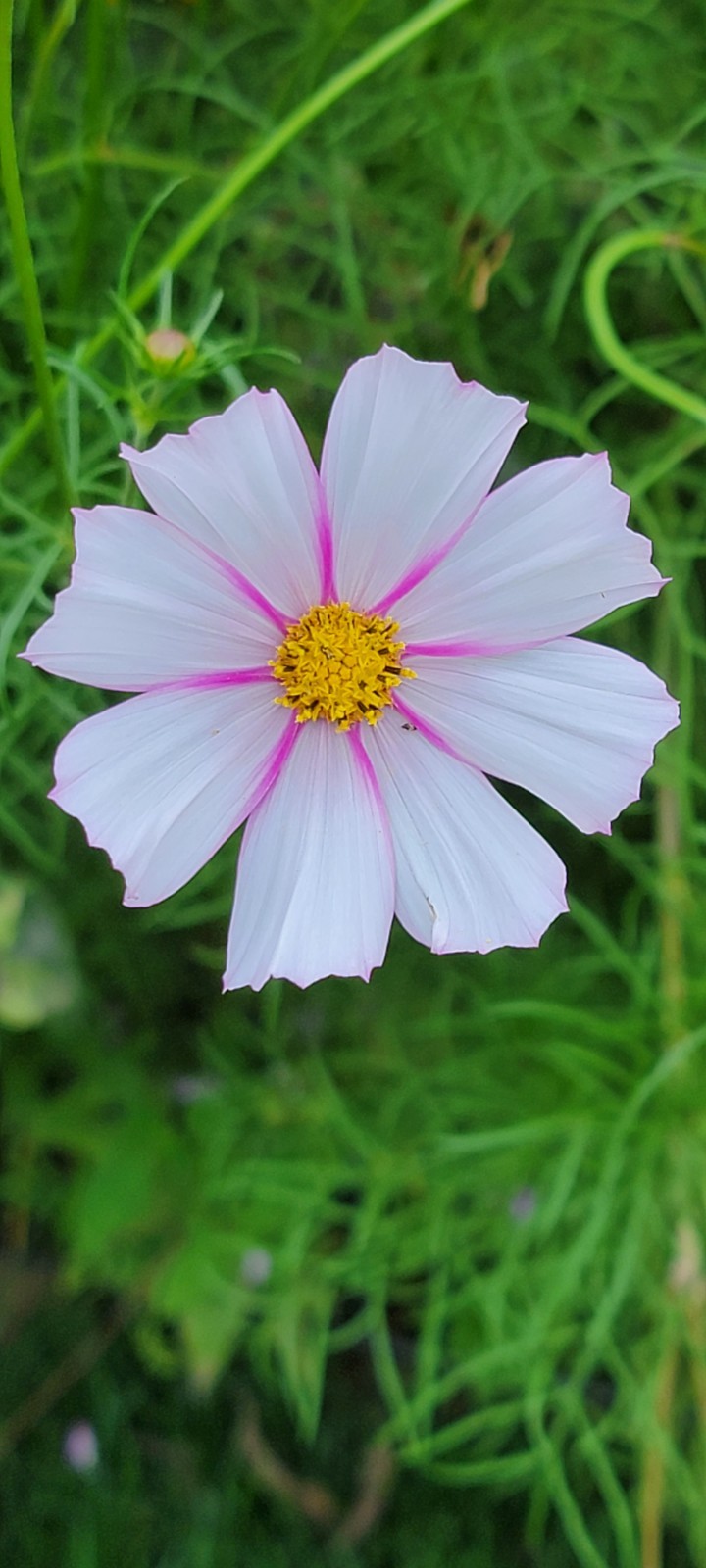
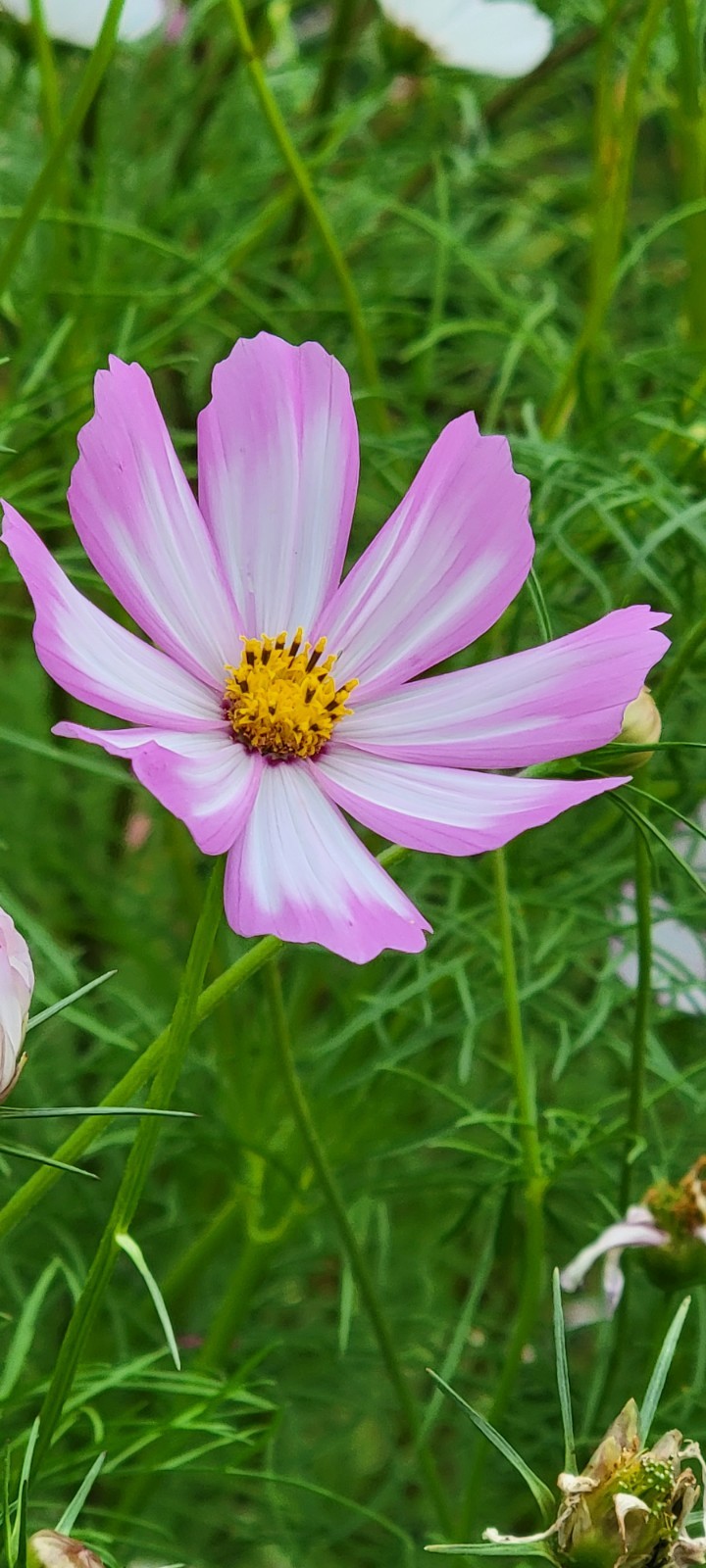
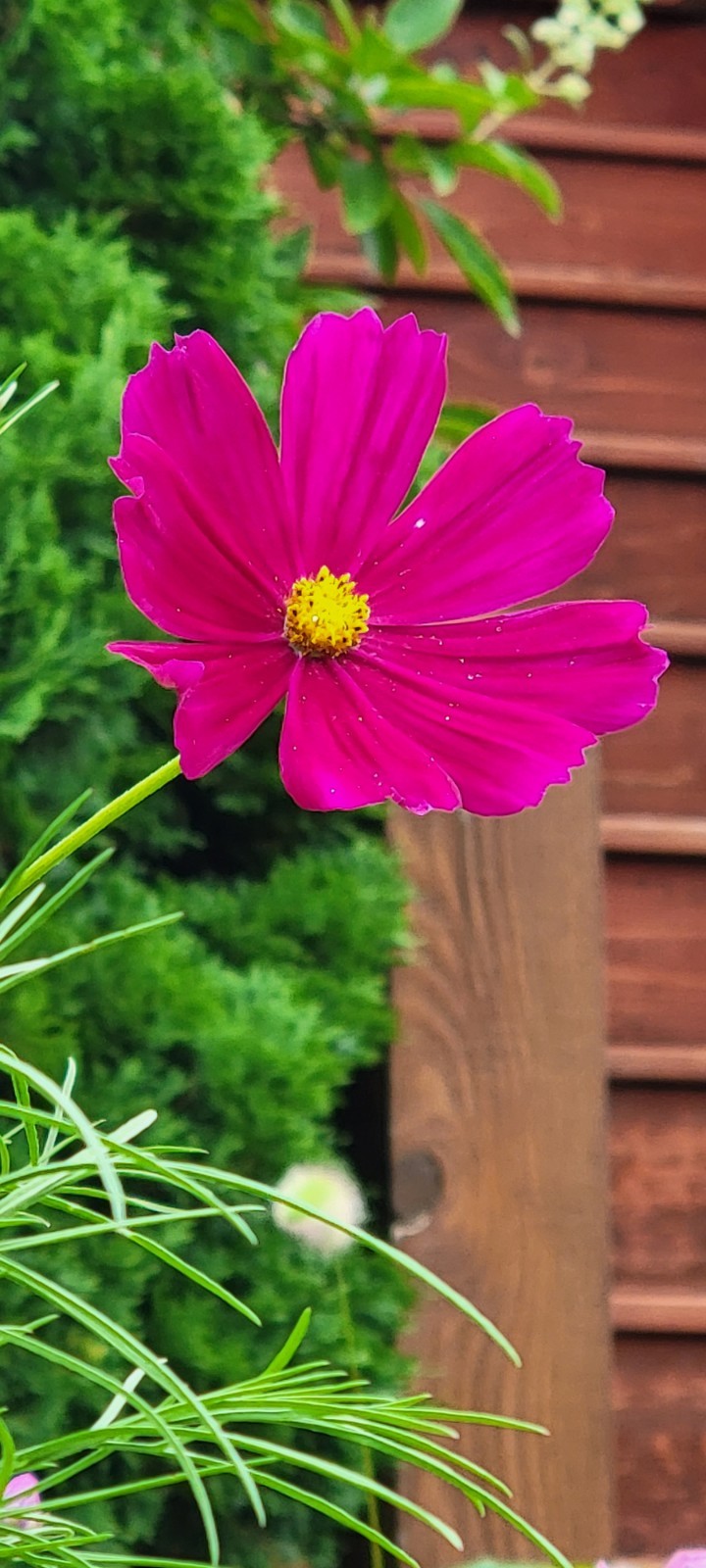

Most peaceful time of the day... in the garden.
8 notes
·
View notes
Photo


Haley’s Cut x Orange Tang
Anticipation...
all photos taken by me (haleyshigherlevel *old online alias now thehortco)
#thehorticultureco#thehortco#thehorticulturecompany#preherachenes#haleys cut x orange tang#seeds#cannabis#cannabis seeds#seed company#cannabis cultivation#cannabis photography#horticulture#marijuana#medical marijuana#medical cannabis#legal cannabis#cannabis growers#grow your own#from seed#grow from seed#grow#pot#my photos
1 note
·
View note
Text
If you usually buy your flowers from the nursery, this year is a good time to switch things up and grow from seed! You’ll save money, get to see your seedlings from start to finish, and have lots of plants to fill your garden.
Growing from seed doesn’t have to be difficult. With some basic knowledge and a few tools to get started, anyone can have success growing their own beautiful flowers to line their flowerbeds in the spring. In fact, sowing seeds and recording their growth is a great activity to do with kids, and there are a number of different ways you can do it!
In this article, you’ll learn about what you’ll need for a basic seed-starting setup, as well as some of the most beginner-friendly flowers to grow from seed. So, let’s go! Your new flower garden starts right now!
Flowers to Direct Seed
Sow the seeds of the following flowers right into your garden beds outdoors! Many of these germinate better after a period of cold winter temperatures, called “cold stratification”. Keep in mind that all of these flowers can be grown indoors as well, but their germination rates may be impacted when started indoors.
Sweet Williams

Sweet Williams are a profusely flowering cottage garden favorite. These colorful little flowers reseed themselves. Plant them once, and you’re likely to have them in the garden for years to come! They will grow into a lovely patch of fringed flowers in hot pink to dainty blush over time.
Sweet Williams flowers will bloom all summer long and last for weeks when cut for the vase. If you prefer to grow them inside, plant seeds near a sunny window or under lights 6-8 weeks before your last frost. These mildly clove-scented little flowers are an easy way to bring lots of color to the garden!
Sunflowers
Sunflowers are pollinator favorites and produce delicious seeds! These popular and low-maintenance annual flowers are a garden favorite for many reasons.
There are many different types of sunflowers that bloom in a number of interesting shades. They grow in several different sizes and have many bloom forms. The classic ‘Helianthus annuus’ grows from 2 to 10 feet tall, depending on conditions.
Growing sunflowers is simple. Kids love planting their large seeds and watching them climb toward the sky. These beauties are native to the US and tolerant of drought, deer pressure, and poor soils.
They can be sown indoors and transplanted if you’d like an earlier bloom. However, direct sowing yields better results because they have a long taproot that doesn’t respond well to transplanting.
Hollyhock

Hollyhocks add dramatic vertical garden color. Each tall stalk can grow up to 10 feet, and their large, showy flowers open over an extended period. Plant them near the house or along a fence to provide support.
Hollyhocks grow easily and need no attention once they mature. They are biennial, meaning they concentrate on growing their roots, stems, and leaves in the first year and flower in the 2nd.
Once they flower, you can harvest the seeds or leave them to scatter on their own. They’ll reseed, giving you a gorgeous patch of constant flowers in the coming years.
Lance-leaved Coreopsis

This cheerful wildflower is native to parts of Canada and the US. It needs cold stratification, so you can direct sow as early as November. Loads of flowers with fluted bright yellow petals (sometimes with a maroon base) grow atop an upright, attractive plant.
Coreopsis attracts beneficial insects to the garden that will eat unwanted pests. It’s easy-going and self-seeds, making it a cinch to fill a garden bed or pot with lots of sunny garden color. Plant in full sun.
Blue Wood Aster
Blue wood aster grows into a 3 ft. tall bushy shrub covered with small lavender star-shaped flowers. It blooms in late summer or early fall, providing color as many other blooms begin to fade.
This US Native grows well in part shade and even puts up with dry conditions once established, making it a perfect choice for those difficult garden spots.
It’s a butterfly host plant and supports many specialist bees that can only feed on its nectar. It will spread, so plant it somewhere you’d like a swath of lavender color!
Penstemon Digitalis
Penstemon digitalis, or Foxglove Beard-tongue, is the beautiful wild cousin of garden foxglove. It has similar flower spikes, with pretty tubular flowers beloved by hummingbirds. Sow Penstemon digitalis in fall through late winter, and you’ll have blooms by early summer!
The snowy-white blooms are tinged with pink. They are long-lasting and look beautiful when planted en masse. Penstemon is rugged. It will put up with drought, clay soil, and harsh sun. In southern climates, it can be evergreen.
Bradbury’s Bee Balm

This flower is a member of the mint family, which spreads readily to form pretty flowering clumps of ivory to blush flowers. It’s native to the Eastern US but will grow readily anywhere with lots of sun and medium to dry soil.
The fluffy, ragged blooms are unusual and sometimes spotted with purple. They contrast well with the plant’s dark green foliage. Some gardeners like to harvest it to make mint tea. Plant ‘Bradbury’s Bee Balm’ in an informal area where it will have a bit of space to spread out.
Black-Eyed Susans
Black-Eyed Susans are a long-time favorite, with golden-yellow daisy-like flowers and deep brown centers. Some have an attractive burgundy floret in the center. Plants grow to about 3 ft. tall and have lance-shaped fuzzy leaves.
Rudbeckia hirta is another butterfly host plant. Like many natives, it will spread a bit if it likes the conditions. Direct seed in full sun fall through late winter, and look forward to lots of joyful golden blooms!
Shrubby St. John’s Wort
Did you know you could grow robust shrubs from seed? Shrubby St. John’s Wart is easy to grow and forms a 4 ft. shrub smothered in bright yellow flowers. Individual flowers are small, but they appear in such proliferation that the bush has visual impact in the garden.
The real stars are the prominent fluffy golden stamens, which add interest to the blooms. St. John’s Wort likes full sun. Rabbits and deer avoid it, while it’s an important nectar source for many native beneficial insects.
Commonly used as an herbal remedy, Shrubby St. John’s Wort makes a beautiful and easy low hedge when several are planted in a row.
Hungarian Breadseed Poppies
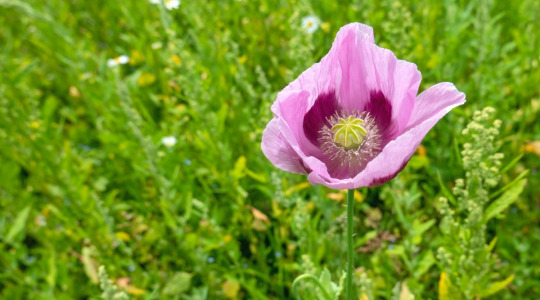
The delicate, papery blooms of the Hungarian Breadseed Poppy are breathtaking in the garden, especially when planted in large numbers. These hardy seeds can be sprinkled right onto the soil outdoors from November through February. They can even be thrown out on top of the snow!
As they start to sprout, the large blue-green leaves almost look like the start of a head of lettuce. Soon, long stems will produce big buds that open into white, lavender, or deep purple, with signature dark centers.
Best of all, Breadseed poppies have gorgeous ornamental seed pods that are striking in garden beds. They can be harvested to replant next year.
Nasturtium
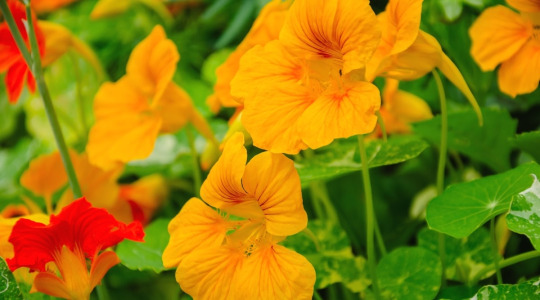
In my book, nasturtium, with its huge lily-pad leaves and colorful blooms, is a garden essential. Not only is nasturtium easy to grow- it also provides benefits as a companion plant. Nasturtium attracts beneficial insects and makes the calcium in your soil more accessible to other plants.
The whole plant is edible and has a delicious peppery taste popular in salads. To plant nasturtium, sow the seeds directly into the garden (about ½ inch deep) about 2 weeks after your last frost.
They thrive on neglect, so once established, water only when the soil is dry. Soon you’ll have a rainbow of blooms!
‘Purple Sensation’ Allium
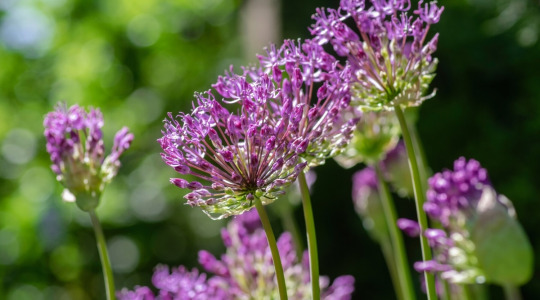
‘Purple Sensation’ Allium is simple to grow from seed planted directly outside in the fall. Come spring, they shoot up and produce showy globes of 50-plus deep purple flowers. They come back every year and produce lots of seedheads to increase your plants for free!
Alliums are beautiful and useful in the garden. They emit a mild oniony smell (they are in the onion family) that isn’t noticeable to humans but repels aphids and Japanese Beetle grubs.
These quirky plants are often grown from bulbs but are just as easily started from seed. A simple way to add eye-catching blooms to your garden beds!
Flowers to Start Indoors
Plant these seeds in seed trays or small pots with drainage. Keep them under grow lights or place them in a sunny window. To speed germination, provide humidity by covering pots with plastic wrap and uncover when sprouts appear.
Strawflower
If you love colorful long-lived blooms, Strawflowers are a must. They look a bit like fluffy daisies, with stiff paper-like petals that last forever.
Strawflowers come in a rainbow of colors, with warm shades of red, orange, hot pink, and yellow being the most popular. They provide lots of interest and easy color in the garden.
Strawflowers are simple to grow from seed. Plant them indoors 4-6 weeks before your last frost date and transplant them directly into the garden after temperatures have reached 70 ℉. They’ll bloom all summer through early fall and make great cut flowers!
China Asters
China Asters look fantastic in containers with other flowers. They fill a large pot beautifully and have robust 3-5 inch blooms. China Asters don’t need a lot of water and will last about 10 days in the vase.
They came in many bloom styles and colors, but I prefer the large pink peony-like blooms of ‘Rose Quartz Mix’. Whatever color palette you prefer, there’s a China Aster for you!
These grow easily from seed when planted indoors in small pots. Keep them evenly moist and transplant the seedlings after all danger of frost has passed.
‘Cupcake Blush’ Cosmos

Cosmos are a cinch to grow and provide lots of aesthetic value for little effort. They have lacy, fern-like foliage and large blooms that float above 2 ft. tall plants. Plant them inside 5-7 weeks before your last frost, and plant them in the garden in early spring.
‘Cupcakes Blush’ is a unique variety with large, pale pink blooms and an interior ring of tufted petals that look like cupcake wrappers.
For a bushier, more productive plant, grow them about 8 inches tall, then pinch back the growing tips right underneath a set of leaves. Soon, you will have more branching and more blooms!
Cosmos often reseed themselves in the garden, so look out for their little sprouts next spring.
Final Thoughts
Growing flowers from seed is the easiest and cheapest way to get a beautiful garden. There’s nothing like observing the growing process from seed to bloom, along with the pride of growing your garden all on your own!
If you haven’t tried starting with seeds before, these easy flowers are a great way to begin. Whether you decide to start your seeds indoors near a sunny window, have an elaborate setup with grow lights, or prefer to plant directly outdoors, there are varieties that will grow well for you. Enjoy your flowers!
0 notes
Text
Adding To or Starting a Garden
AKA, the beginning of the Plants-Related section of this series.
This is my third post in a series I’ll be making on how to increase biodiversity on a budget! I’m not an expert--just an enthusiast--but I hope something you find here helps!
Got an area of lawn you’d like to convert to a wildlife haven? An area you can stick some hanging baskets in? Want to know how your garden of tomatoes and zucchinis is already putting in a lot of work? This is the section for you!
It would be dumb of me to not acknowledge that the act of gardening can come with a lot of costs. Buying seeds, buying plants, buying soil, raised bed materials, mulch, etc. … it can all get a bit daunting, let’s be honest! But there’s quite a few ways to get seeds and plants for free or extremely cheap, which I’ll be addressing in this section! The next section will be all about addressing the other Costs in gardening and how to mitigate or eliminate them entirely.
Also, do keep in mind; there’s no need to try and convert a whole area from lawn to garden or unused to garden at once. In fact, it could actually be extremely beneficial to do it a little at a time--maybe four or five square feet to start out.
Front Lawn (or Managing Principles)
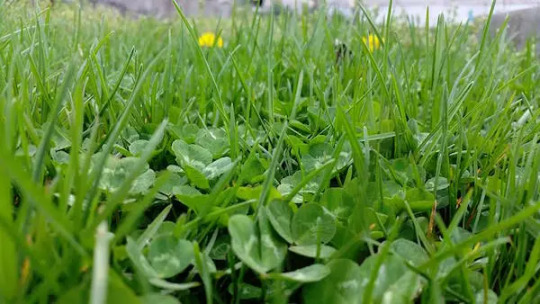
If you live in a place where you’re required to have a grass turf lawn (HOA’s come to mind…), try replacing it with native grasses instead! You could even possibly use a low-growing ground cover plant like clover to a similar effect! Reseeding/replacing an entire lawn can be a big upfront cost, but even just letting the lawn be a little messy and tall helps. If the lawn gets patchy, leave the bare spots for a little while and something different will likely pop up! Pioneer species will fill the gaps and provide benefits to other plants around them, support animals, and more! If you want to take the guesswork out of it, you could always research what the pioneer species are in your area and plant the ones you like most.
Obtaining Seeds for Cheap or Free
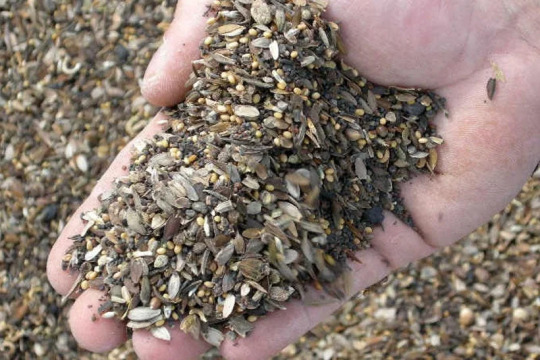
The cheapest way to start a garden is by far via seeds. However, seeds can be a bit complicated to grow, and some sources make them… way overpriced. Fortunately there are ways to get seeds for little to no cost!
Some places sell seeds for as low as a dollar, 50 cents, or 25 cents! The packets may not have a lot of seeds, but it’s definitely a good start for a low budget! I’ve personally bought cheap seed packets at Walmart--the Ferry-Morse and Burpee brands are not what we’re looking for here. Typically the cheaper ones I’ve found are American Seed (which is owned by Green Garden Products, which also owns Ferry-Morse, Livingston Seed, McKenzie Seed, and Seeds of Change. Do with that information what you will), but they’re rarely stocked near the Ferry-Morse ones in the Formal Gardening Section. I’ve most often found them on end caps near the gardening section, so you may have to weave through a few aisles to find them, but once you do there’s an array of flower and vegetable seeds to select from! Alternatively, I’ve found seeds at Dollar Tree sold 2 or 4 for a dollar in Spring as part of their seasonal product; however, when they’re out of stock, they’re typically out of stock for the year. Try to check them out early in the year!
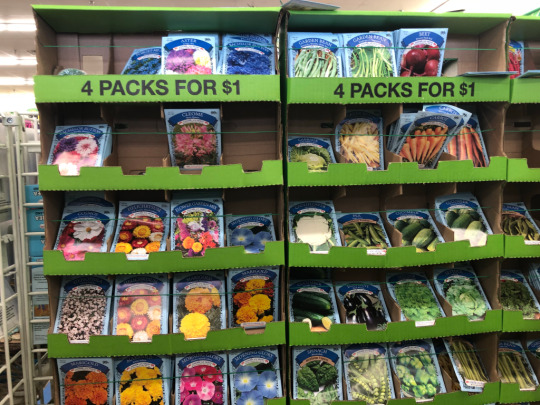
Otherwise, other seed companies like Urban Farmer or Botanical Interests will often have semi-frequent sales in spring and fall, when people are stocking up on seeds--joining their email lists can help you be the first to know when a good sale is going on!
Some foods from grocery stores will provide seeds that you can use in the garden as well. I’ve had the most luck with store-bought bagged beans, peppers, and tomatoes. Some people have had luck with watermelons, apples, citrus, squash, and more. Do keep in mind that you likely won’t get the same variety of fruit/vegetable as the one you bought--the resulting plant may look different and taste different.
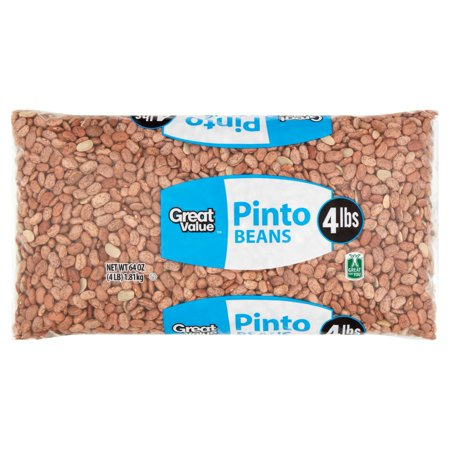
Give it a shot! Pick some beans you like--if they don't grow well, at least you can eat the rest!
If you live in the US, food-producing live plants, bare roots, and seeds can often be purchased with SNAP benefits. But what does growing fruits, veggies, and herbs have to do with boosting biodiversity? While food crops aren’t typically native, they still provide valuable shelter for native insects. Some plants even have intricate relationships with native fauna--like the squash bee, a solitary bee which exclusively pollinates cucurbits like pumpkins, squash, and zucchini. And we get to benefit more directly as well! If you’re planting a diverse range of foods in your garden (as opposed to the swaths of single-plant farms that typically produce what’s sent to grocery stores), you’re supporting high levels of biodiversity by providing a variety of plants for creatures to live and hunt around.
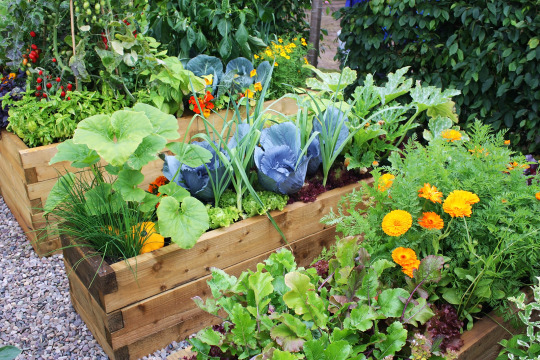
Most of the time, when we think of boosting biodiversity with a garden, we think of a colorful flower garden teeming with pollinator species. However, if we’re striving to use native species, it can be a bit difficult to find some species in stores. I can say from experience that trying to find any wildflower seeds other than butterfly weed, purple coneflowers, and black-eyed-susans is… challenging, if you limit yourself to stores like Walmart, Home Depot, and Lowe’s. You might occasionally get lucky with an ACE Hardware or a local nursery, but even then sometimes it can be hard to track down who in your area is selling what--let alone if you live in an area where no one really is selling native plants or their seeds. Not to mention, even once you find a local or online store selling the seeds you want, they can sometimes cost a pretty penny. So what do you do?
If you have the option to, consider gathering native seeds yourself! Get good at identifying the native flora and fauna--or at least, a few target plants and their lookalikes--and get ready to go! Learn where they tend to grow, when they’ll be seeding, etc. Try to identify the plant before it goes to seed (for most plants, it's easiest to identify when flowering), then check back regularly to gather seeds. Typically, if I want to learn how to collect seed from a specific plant, I just search it on Google or YouTube--oftentimes, I'm lead to the GrowItBuildIt Youtube page, so it may be a helpful resource for you as well! Of course, make sure to leave plenty of seed behind so the wild population can repopulate, and seed can feed other creatures in the area. A good rule of thumb is to take no more than 1/3rd of what's available.

Buying seed in bulk is an option if you can afford the upfront cost. Try teaming up with a few friends to buy some bulk seeds and split them amongst yourselves--you’ll get tons of seed! Prairie Moon is a popular site that'll sell seeds by the pound if you can afford the price--though they're in the US, and I believe they focus on Midwest and East Coast natives.
If you want to cheat the system, don’t buy bulk sunflower seeds--buy bags of sunflower seeds being sold as birdseed. They’re typically all black oil sunflower seeds, but they’ll sprout, and they’re fairly cheap for the amount you get!
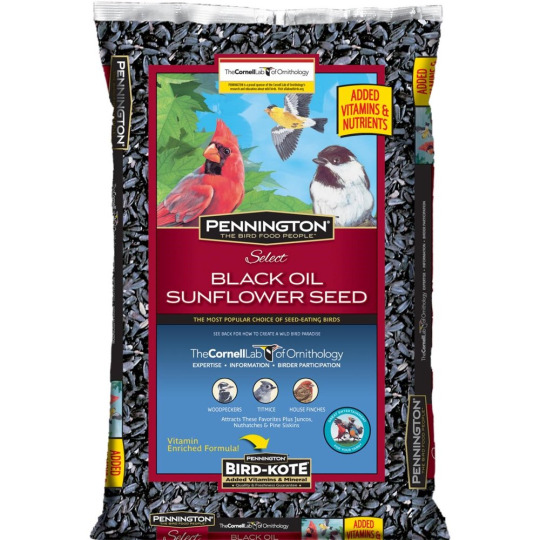
However, beware generic wildflower seed mixes! Many brands like to sell wildflower seed mixes in big box stores like Home Depot, Target, or even Dollar Tree, but they’ll often include flowers that aren’t native or possibly even invasive in your region! Before you make any purchases, double check to make sure the contained seeds won’t do more harm than good! A quality source of native seeds will provide English and Latin names for all seeds included, and will be native to the region or at least non-invasive.

See this? I don't trust this.
There’s a good handful of programs online that’ll send you free seeds if you’re planning to start a native habitat project! Poke around online and see what you can find; you might get lucky! The best time to start looking for these is fall and winter, I find--by early spring, many of them are either done or beginning to wind down... though some also start up in spring. Ultimately--just check regularly! You never know what you can find!
Other Ways to Get Plants
Don’t want to start from seed? That’s fair! You can try cuttings! Just be sure not to take too much of the plant while you do so. Make sure you’ve gotten a few leaf nodes on your cutting, and cut any flowers you may have gotten. Make sure to leave some blooms and foliage on the original plant for the creatures in the current habitat--you don’t want to destroy one habitat to make another in your garden. There’s tons of methods of rooting cuttings, many of which have different efficacy rates for different plants, but that’s a topic for another post.
If you find seedlings growing in a place where they won’t be able to sustain themselves long-term, or are in danger of being destroyed, consider relocating them! You may be able to gently dig up and transplant the seedling to your garden. Don’t do this if they’re in a place where they can easily survive--ideally, you’ll be taking plants from sidewalk cracks, heavily maintained public gardens, roadsides, etc. Do be careful while doing this--ensure your safety first!

You’re totally allowed to join gardening communities like clubs, facebook groups, and more before you’ve even put a trowel to the dirt. These are great places to learn information and advice! Many gardeners are more than happy to help out a new gardener, and will eagerly provide seeds, cuttings, or even baby plants! Talk to some people about your gardening journey and what you’re hoping to do, and you just might find some kindred spirits--or at least get more people interested in the topic!
Seed and plant giveaways and trades happen all the time in gardening clubs, as well as online! Just poke around and see what you can find! Some are explicitly trades, meaning you’re expected to send something in return, but once you get your feet on the ground with some plant knowledge you’ll be stellar! You may be able to explain you’re just starting out, and someone may send you seeds without expecting a trade, but I’d suggest trying giveaways first.

Poke around online and see if there’s a local chapter of your state’s native plant society. From there, you’ll likely be able to find a calendar of events--many of them will host plant sales in the spring, with a bunch of native plant seedlings ripe for the pickings if you can make it out and have some money to spare! Fair warning, though, you’ll want to get there early if you can. If they say they’re starting at 10, try to get there by 9:45. Year after year, there’s always record turnout, and they sell out of plants faster than ever. Just trust me on this. I’ve been let down; hopefully you won’t have to be.
Some libraries are beginning to host seed libraries! Check around and see if your library has one! Ideally, the system works best if you also have seeds to contribute in return, but if you’re just starting out I’m sure they won’t mind you taking some seeds! Just consider saving some seeds to contribute in the future and pay it forward. If your library doesn’t have a seed library? Consider asking if they’d be willing to start one! Community interest is a great way to get the ball rolling on projects like these, but they’ll only know the community is interested if the community tells them they’re interested!
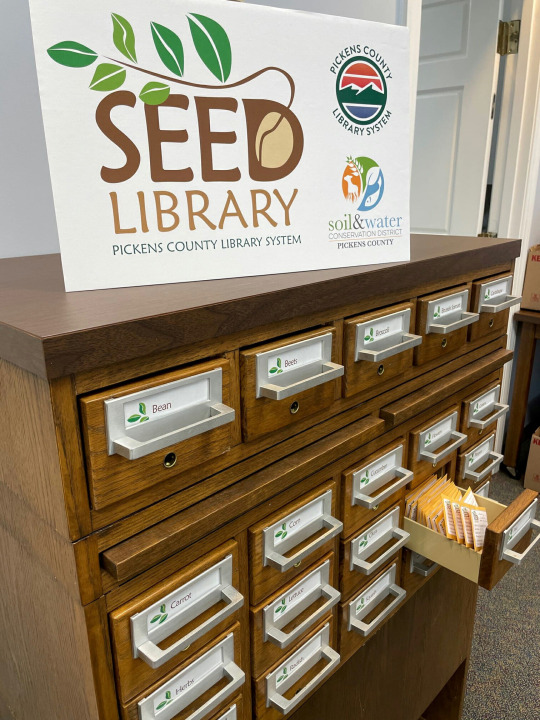
Volunteer to Garden for/with Someone Else
Maybe someone in your area wants to garden, but is struggling to find the time/energy. Many elderly people who used to garden simply can’t anymore but still would like a garden. Other people may love to have a helping hand in their garden. You might even find a few people in your area interested in renting and sharing a community garden plot with others, so they don't have to handle it all on their own! They may be interested in increasing biodiversity right now, or may be willing to if it’s brought up to them. You might be just the kind of person someone needs! Since it won't be your garden, you’ll likely need a bit of permission and collaboration to get anything in particular going, but it’s worth a shot and a way to maybe even make friends!
Again, your mileage may vary with some of these. You may not know where there's a bunch of wildflowers growing in your area, or maybe your local library doesn't have a free seed library. That's okay! Do what you're able to, find what you can find, get what you can get! And there's never any shame with starting small--in fact, starting small can make the project easier to manage and expand when you're able!
That's the end of this post! My next post is gonna be about ways to start growing plants cheaply--low cost seed starting set ups, essentially. There's a lot of good options, many of which I've used myself even! Until then, I hope this advice is helpful! Feel free to reply with any questions, success stories, or anything you think I may have forgotten to add in!
#biodiversity#solarpunk#gardening#outdoor gardening#growing from seed#ani rambles#out of queue#the biodiversity saga#i will be honest I have never flat out approached people to offer to help them garden#HOWEVER. People HAVE approached ME asking ME to help THEM with/plan THEIR garden#granted it was after I'd been gardening for a good few years. and its mostly family or family friends but yknow#people would be like 'oh wanna help me with my veggie garden?' even before I tried growing vegetables#i don't think the library near me has a seed library but you just wait until i. get the courage. to go to the library regularly.#i've seen people also make their own little seed library structures kinda like a little free library but like#i dont think my neighborhood is about that life.#if any of yall have those though it could be a great resource! also send pics because I love seeing them#not to say that this post should become a giant seed trade but if it did become that i would be the opposite of mad#if there's any typos blame my sister shes got the hotel room at like 60-something degrees and I am FREEZING#welp time to shut up now bye
1K notes
·
View notes
Text
Honestly the more I think about it the more I really think the sun and moon dew mushroom rlly should've been an amorphophallus instead
- extremely rare and take an immense amount of expertise and tedious care and special conditions to bloom (to the point where one blooming is an incredibly proud event for gardens and often publicized to draw visitors nationwide)
- on average take 5-7 years, sometimes even 10 for some varieties, to reach maturity
- human sized
- called the "corpse flower" (because it smells like rotting flesh)
- weird penis shape
- variety called amorphophallus yaoi
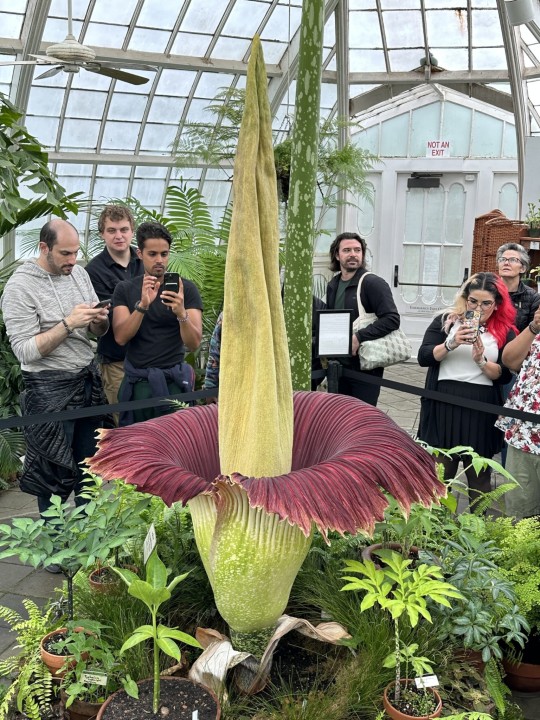
#prefacing this by saying i doubt teen mxtx was a big horticulture studier#and this is my own fanon exposed point or whatevr but ive always been kind of ? at how people call peerless cucumber a 'plant body'#when hes really a fungus#a fun guy even#if i had to scientifically explain id guess mushrooms were chosen because theyre decomposers#so it would make sense to feed it blood and qi. but also like everything about the growing process is very much plantlike#like they grow it from seed right ?? mushrooms dont have seeds ??#is it actually a plant thats just called a mushroom??#whatever stupid airplane stupid stallion novel logic * dies mad#svsss
198 notes
·
View notes
Text







"Khun Yai, what makes you like plumeria? They're quite an unpopular flower, aren't they? Because the Thai name means misery, which sounds quite inauspicious."
"So try smelling them. Their gentle scent makes me feel liberated, and they're also enchanting. I think they smell like you, Jom."
—I FEEL YOU LINGER IN THE AIR 💮 Episode 8
#i feel you linger in the air#i feel you linger in the air the series#ifylita#nonkul chanon#bright rapheephong#yaijom#yai x jom#ifeelyoulingeredit#thai bl#thai drama#bl drama#bl series#my edits.#are bathtub scenes a trope?#because i'm all over them#especially when they're as soft as this one#idk if the overlapping images of plumeria even work or look silly#but i tried ok#i really like plumeria#after i first read the novel i started growing 3 plumeria from seed#i hope they survive the winter because they're my plant babies now
308 notes
·
View notes
Text
instagram
Cool new way to guerrilla garden?
SFinBloom’s Instagram caption below
Here’s a fun way to plant seeds. Not sure what to call them. People get so excited about planting in spring when they see all the spring blooms. Spring blossoms need time to germinate. Seeds not only weather the cold well, some seeds actually require it. Many plant seeds require being cold for a period of time, or cold stratification, to prevent seeds from germinating before winter sets in. Here’s a fun and easy way to cold stratify your plants while making them easy to plant. Its like seed bombs but with ice instead of mud or clay.
#guerrilla gardening#sfinbloom#gardening#outdoor gardening#solarpunk#action#growing from seed#wildflowers#cold stratification#out of queue#ani rambles#i… guess?#its not my original concept I’m just sharing it with yall#Instagram
112 notes
·
View notes
Text

🍓
#I’m just a girl in a world 🎶#yes they’re growing his own avocado from a seed#its name is Dante#besties this WIP took me so so so long#to finish#I hate soul sucking days at work#yes that’s a magical cooking book Baz got from Ruth#I don’t have more#i need to go to bed#letraspal#carry on#baz pitch#snowbaz#simon snow#illustration#book characters#we all now Simon is going to be feral after seeing Baz so chill#fanart#carry on fanart
257 notes
·
View notes
Text
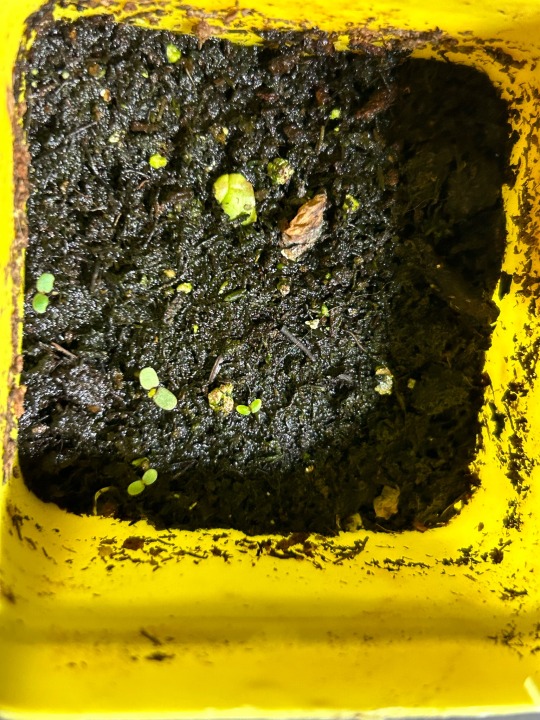
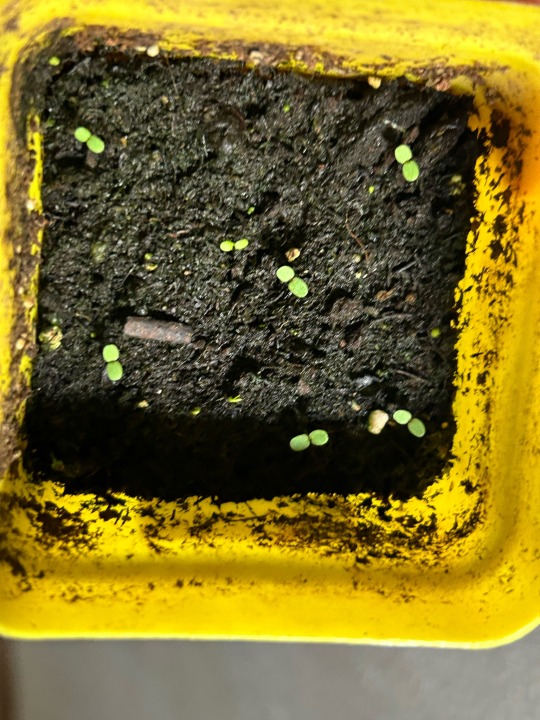
strawberries I started growing
#i don’t really want to care for my plants anymore cuz I don’t see myself living that long#look how good I am at growing from seed…….
52 notes
·
View notes
Text
Radish harvest from our plot at Fremont Community Garden and Wellness Center.
45 notes
·
View notes
Text

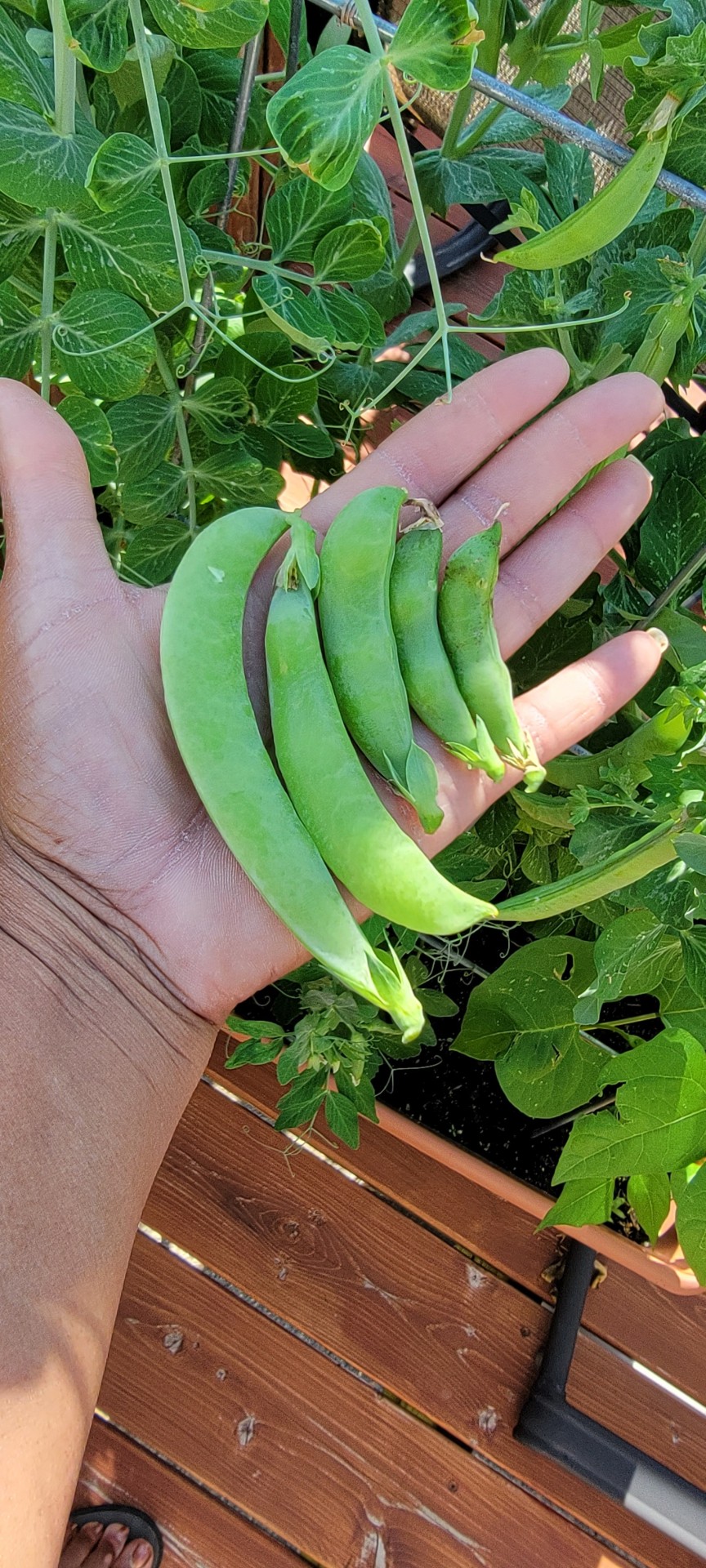







Garden glory July 2022
4 notes
·
View notes
Text
Writing a story is like knitting. You gotta keep picking up the stitches from the previous rows. It's not even about plot holes. It's the momentum, the pacing. You get to a place where you have no stitch to pick up and the whole thing grinds to a halt. The story drags, sags even. It's missing something. You gotta go back and find that stitch.
#not me coming to the end of part 1 in draft 0 and realizing I didn't sew any seeds for part 2 to grow from#excuse me while I go back and shove something in#wipxi pod#writing#novel writing
65 notes
·
View notes
Text
You’ve lost your love for life because you stopped letting the world be fascinating to you
#trees literally just like grow out of the ground from a tiny seed and become some of the most naturally powerful things in the world#don’t tell me it’s just a tree I don’t want to see the world in an abysmal gray nothing is new perspective#🍱
24 notes
·
View notes
Text
Cheaply Starting Seeds
This is my fourth post in a series I’ll be making on how to increase biodiversity on a budget! I’m not an expert--just an enthusiast--but I hope something you find here helps!
Having a high-quality seed-starting setup can feel like an ultimate but distant dream. An entire shelf--an entire room, even, filled with grow lights and plant trays in the optimal setup to make tons of plants? Tons of garden tools, each with a diverse and dedicated purpose? That’s just not an option for some of us. But that doesn’t mean we can’t get started at a low cost!
Seed Starting Set-Ups
Speaking from a somewhat biased Floridian perspective, I’ve had great success starting seeds outside! My usual set-up is on a rarely-used outdoor patio table that’s moved to a sunny spot in the yard, but I’ve even grown seeds in solo cups on sidewalks, or directly in the ground, with great results!

Some seeds grow best when they go through a cold period before germinating, while other seeds aren’t affected much by it and just wait for warm weather. As such, a viable option is to sow your seeds in late fall, let winter roll by, and wait until the seeds sprout on their own come spring! I would try and mark off where you planted said seeds, so you don’t lose track of them and accidentally dig them up.

Alternatively, if you want to get started while it's cold outside, a popular option I've seen is to grow in milk jugs! There's a lot of different ways to do it--everyone has their preference--but if you're already drinking things like milk or juice or sweet tea, and you're going to get jugs at some point in time--why not use them for gardening?
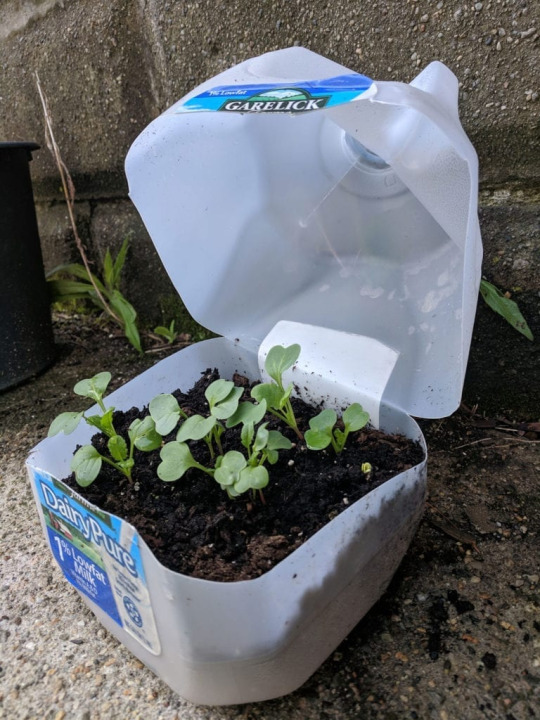
An easy way to clear up a section of lawn to create open gardening space is by using a sheet mulching or lasagna gardening method (though I like to call it the Cardboard Snuff-Out). Place cardboard or newspaper down in fall/winter to mark out where you want to garden. Layer compostable materials like grass clippings and wood chips on top of it, or potting soil/bagged compost. It’ll decompose over Winter into an organically rich bed that’ll have killed the grass and weeds underneath it. You don’t have to break out any tools and sweat over it come spring, and the cardboard itself will slowly decompose as well!

Though it's often recommended to plant things directly into the ground to decrease watering needs and increase nutritional independence, there’s plenty of reasons you may not be able to. Whether you’re renting, living in a place without a yard, or even just can’t or don’t want to break ground in a yard, you can still help biodiversity by growing in pots. Some plants have rather extensive root systems and aren’t well suited for pots, but there are still plenty of options available for plants that’ll boost biodiversity, be beautiful to look at, and grow just fine in pots! A recommendation is to get a larger pot, if you’re able, as it’ll hold onto more water and need watering less often. Not only are potted plants great for providing food for insects, but they can be shelter for other creatures too--there’s been a good few times I’ve moved a pot and found a frog or toad living underneath it.

If you don’t have room for pots on the ground, you could consider using hanging pots or window boxes! These can be great and easily-maintained options to provide food and habitat for insects and birds in an urban living situation like apartments or townhouses, but they can also be a fun way to add even more habitat to an already-robust home garden. You can even make an entire mini habitat in a window box or pot! I can personally say I’ve seen tons of pollinators visit my yearly hanging basket garden that consists of about five to seven plants, and I’ve always loved the idea of having a window box for blooms right out my window. Just make sure that it’s safe--make sure they’re securely fixed, and that whatever they’re hanging from can handle their weight when they’re freshly watered and loaded with plants.
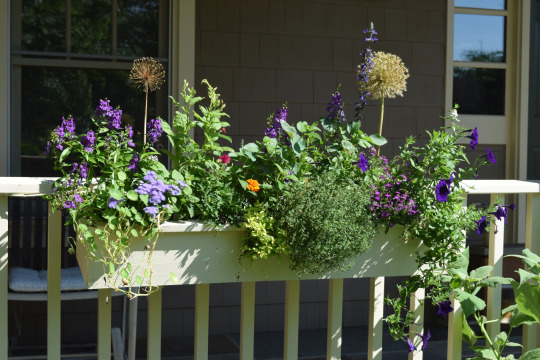
If you want to start indoors, you don’t necessarily need grow lights or heat mats (though it will make things a bit easier.) I’ve successfully grown milkweed, peppers, tomatoes, zucchinis, and even sprouted lemon seeds in college dorm rooms, and kept tomato and pepper plants in a dorm room on a sunny windowsill. For the most part, you need a nice and sunny window, some kind of container, and a source of heat (in my case, I used anything from a space heater to the warmth of my laptop running nearby. If you don’t have any sunny windows, or enough windowsill space to start plants on, its possible to obtain cheaper grow lights. One year, my mom bought me some gooseneck grow lights that could clip onto things for cheap off of Amazon. (Fair warning, though, they did light up my entire room in purple. I lived alone that year (covid year, my roomies bailed), so it was fine, but it was kind of trippy,)
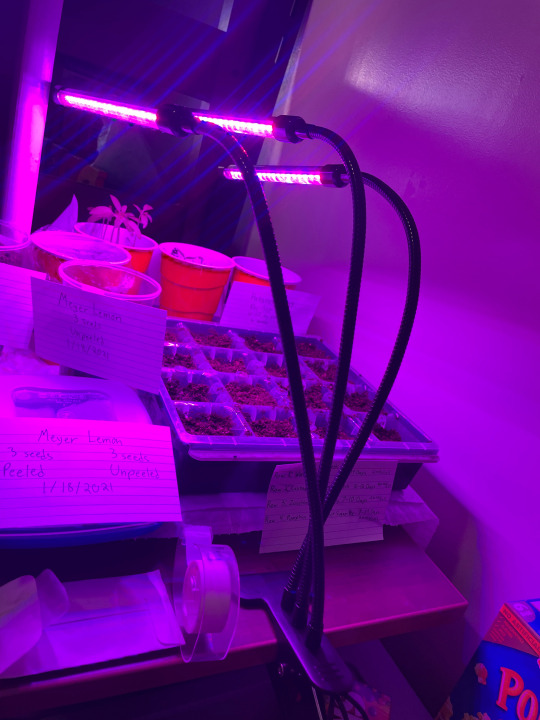
Another year, when I was in an apartment on my own, I bought a grow light modeled like a normal light bulb from the lightbulb aisle in Lowe’s and put it in my desk lamp. Growing seeds indoors can make them grow fast and leggy, so it’ll help if you can keep a desk fan on them so they focus on growing strong instead of tall and fast.
If you’re fortunate enough to have a friend with a nice set up, you could see if they’re willing to let you borrow some of their space to start your own plants as well! My set-up in college was by no means High Class, but I was still more than willing to start seeds for my friends who asked!
Containers for Seed Starting
So now that we’ve talked starting seeds indoors and out, we need to address what to start them in. It’s important that whatever you’re using has drainage holes, and be large enough to support your plant (starting something like milkweed or a squash in a tiny little pot won’t yield great results). Fortunately, there are options here!
If you’re looking to buy pots, Dollar Tree will sell some small plastic pots for cheap in the spring! They’re kind of thin, and won’t last forever, but they’re great for a few uses and don’t cost a lot of money. Something that’s a bit more pricey but are longer-lasting, in my experience, are the Burpee SuperSeed trays. They come in different sizes, but I’m fond of the 16-cell trays--they have silicone bottoms and are made of a nice solid plastic with a tray to hold water, so they hold up for a long time and are easy to clean and reuse!
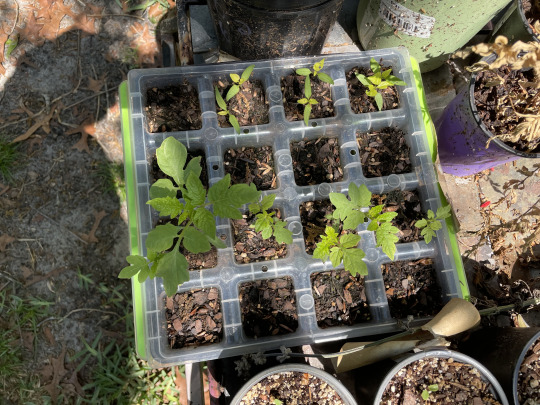
Burpee seed tray, my beloved.
What’s better than a cheap pot? Free ones, and there’s plenty of options there! I’ve seen people use toilet paper or paper towel rolls as pots by folding the bottoms in and have it work well for them! I think this method would work best if you had some kind of tray to keep them moist, because mine dried out fast last time I tried this method. I’ve also seen people make pots out of newspaper with a few different methods, and the people who use this method love it--apparently, the roots pass through the paper easier and it decomposes faster when buried, so you can just transplant the whole pot and avoid any kind of transplanting shock. If you don’t have any newspaper on hand, you can likely ask your friends or neighbors!

I’ve gotten lots of mileage from reusing old containers by poking a few holes in the bottom with knives or scissors--just be careful while you’re doing it! I, personally, am more likely to use an already-used solo cup for it--they’re a nice size, so they hold a good amount of soil and moisture and give the seedling a good amount of root space. I tend to write the plant information on the side of the cup in sharpie marker, or on an index card in pen. I’ve also heard of people making use of egg cartons, fruit containers, yogurt cups, milk cartons, soda bottles--the more you start thinking about what you could easily poke a hole in, the more options start coming around!
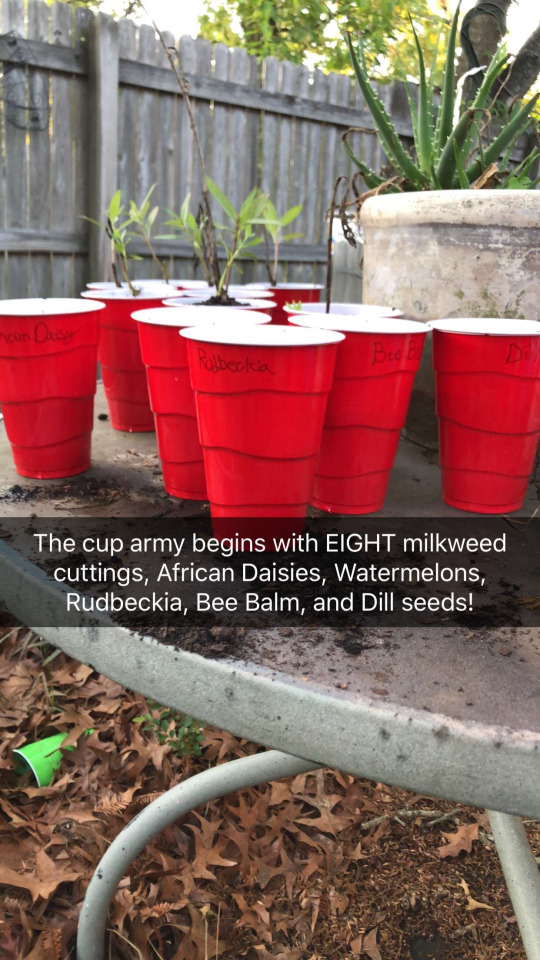
This photo may be from 2018, but I'll still regularly reuse cups like this! They're also great for cuttings!
As you start planning to move your seedlings into the ground and preparing planting sites, you’ll likely need a few tools to do it! How do you get these? You may be able to borrow some tools from a neighbor! As long as you make sure to return them in good condition, depending on how friendly your neighbors are, they might be totally fine with you borrowing their tools for awhile. If you don’t want to take that route, there may be a tool library you can borrow from, or a mutual aid group that can loan you tools for awhile. Either way, borrowing tools is cheaper than buying them--though, if you do have to buy tools, cheap hand-tools from Walmart or the dollar store work just fine. They’ll even last a good while if they’re taken care of when not in use! I've even seen places like Ross sell some tools and pots in spring!
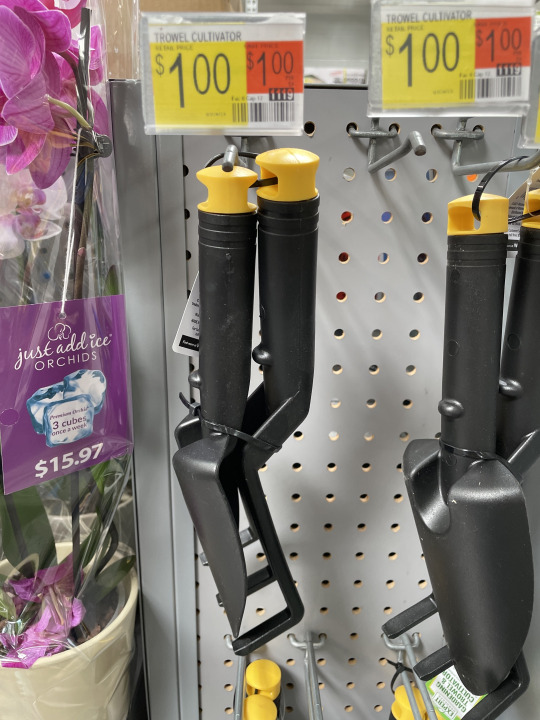
Spotted in a Walmart gardening section by the registers, 2023.
Of course, your mileage may vary with these. I genuinely cannot think of the last time my house got a newspaper, and as I've mentioned I don't have to worry about snow. Similarly, maybe you don't use plastic cups when you can help it, or don't have a particular affinity for eggs and yogurt. Maybe there isn't a tool library in your area--I sure don't know if there is in mine--but it could still be worth poking around and asking a neighbor!
That's the end of this post! My next post is gonna be about ways to support your plants for cheap--we're gonna be talking compost, mulch, and trellises. Until then, I hope this advice was helpful! Feel free to reply with any questions, your success stories, or anything you think I may have forgotten to add in!
#biodiversity#solarpunk#gardening#outdoor gardening#growing from seed#budget gardening#cheap gardening#indoor gardening#ani rambles#out of queue#the biodiversity saga#I can make a post later about how I prepare solo cups for being used as pots if yall want#I've found its safest to just use a nice pair of scissors and keep the cup upside-down on the table while I cut into the bottom#and when i say 'take care of the tools when not in use' i mean 'dont be me and leave a cheap shovel from dollar tree out in the rain'#it had a wooden handle and it basically just like. rotted. fell apart in my hand when I picked it up#generally keeping tools in the garage will also help them not rust as fast too#but if you're gonna leave them outside at least put them in shade#the number of times i have lost feeling in my hands because i picked up a hoe that was laying in the sun and fuckin SCALED my palms#its not fun. dont do it. maybe its a Floridian problem but still#if you read all these tags. uh. shovel emoji. idk. sorry dude.
216 notes
·
View notes
Text
psst are there any story bits or themes you're wanting to see explored wrt the Hi-Note trio?
#I've got some things cooking#and I know I ask this from time to time but#it gives me nice lil seeds to grow in my brain when people wonder about or request certain things that narratively pertain to them heheh#rn I'm stirfrying up a lil piece of prose about Raf Margie and Tess returning to Vancouver after their first year together on Cortes Island
26 notes
·
View notes